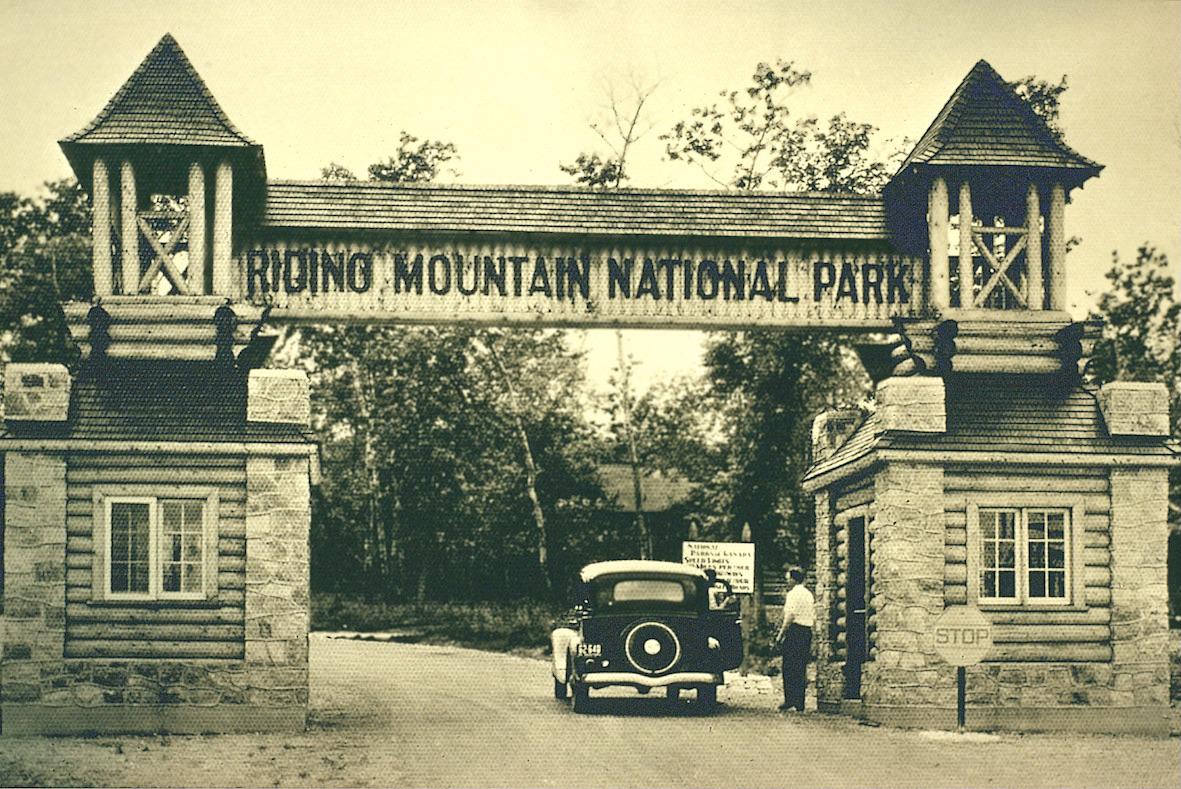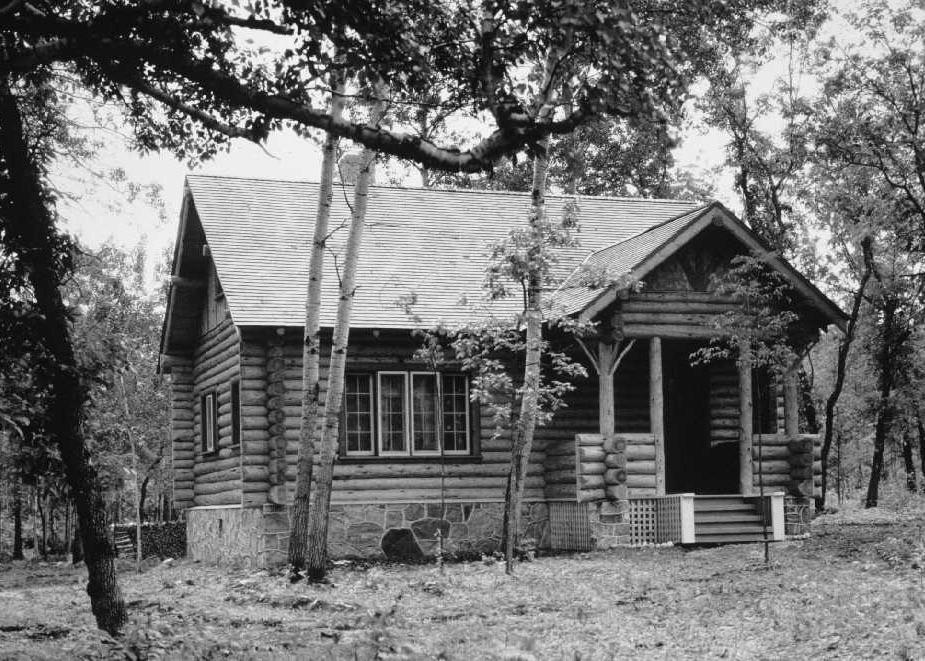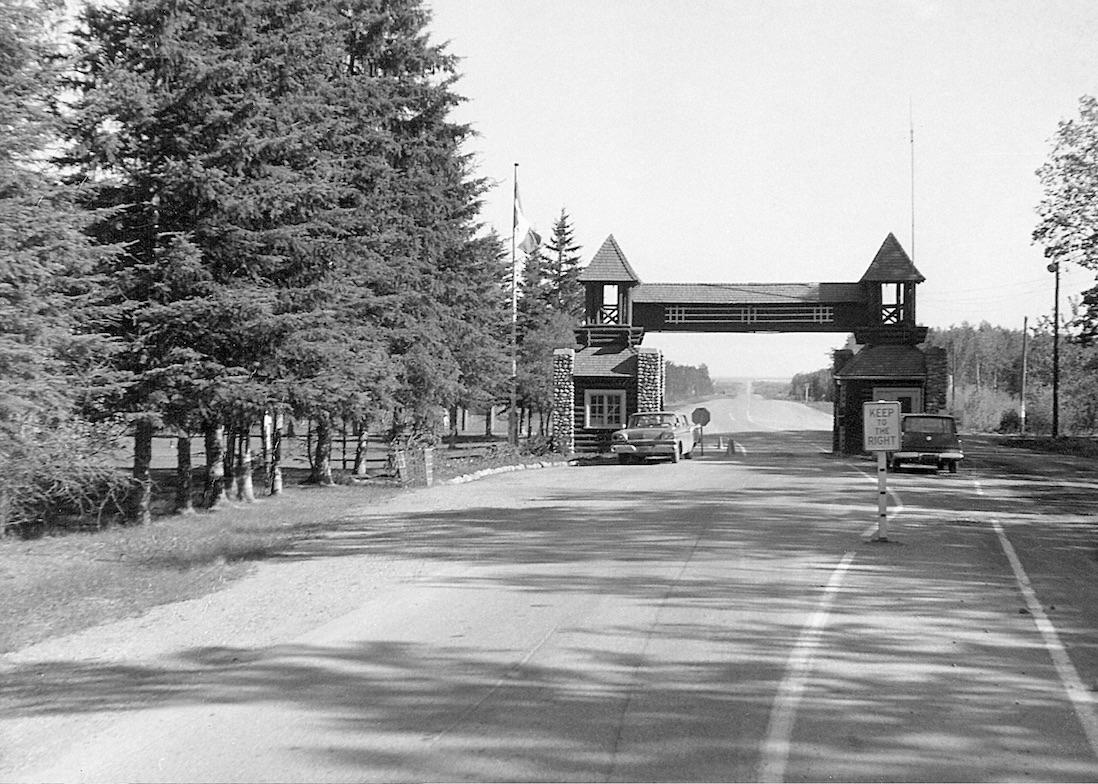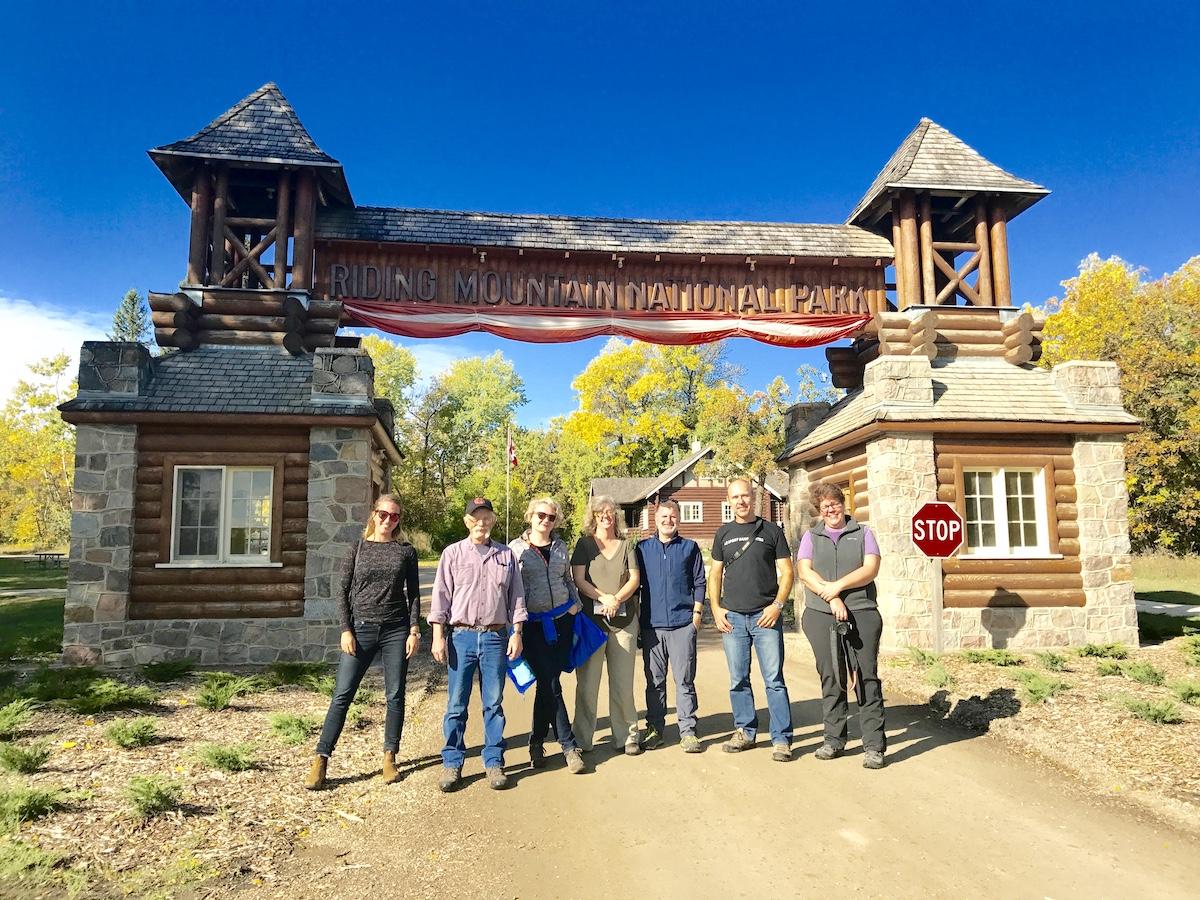
An archival shot of the historic East Gate to Riding Mountain National Park/Parks Canada
Straddling the highway at the eastern entrance to Riding Mountain National Park, a truss bridge made of hand-hewn logs and local stones featuring turret-like cupolas set on twin kiosks transports you to the 1930s and the early days of Canada’s national parks system. The gateway makes some people feel like they’re living the scene from Jurassic Park when the awestruck main characters first pass through a massive gate to an island theme park.
Instead of cloned dinosaurs, there are elk, bison, moose, bears, beaver and lynx on the other side of what’s officially known as the East Gate Registration Complex. Not to mention nearly 3,000 square kilometres (1,158 square miles) of protected boreal forest, aspen parkland and fescue prairie perched atop the Manitoba Escarpment.
Everyone stops to photograph themselves under the iconic gateway that rises up at the curve of the road. Some stay to dig into the fascinating history of the last example of the Canadian rustic design style of architecture that dominated between 1887 and 1937 as the national park network was being created.
“Upon speaking to countless visitors that have stopped there, it’s the connections that the spoken history we (parks staff and former residents) provide that really makes the impact,” says Roberta Tesar, a Parks Canada resource management officer for the Riding Mountain Field Unit. “Being able to put into context the history of the people that worked on it, the history of the natural and historic connection that the materials used represent, and the uniqueness that this is the last one of its kind — that really wows people.”

The former gatekeeper's residence at Riding Mountain National Park can now be viewed only from the outside/Parks Canada
Land for Riding Mountain was set aside in 1929 and it became Manitoba’s first national park a year later. An impressive South Gate was built in 1931 and the park officially opened in 1933. An East Gate was erected in 1933 and 1934, and a North Gate was added in 1936. Now only the east log entrance gate remains, and the complex includes the former warden’s and gatekeeper’s residences.
According to a plaque by the Historic Sites and Monuments Board of Canada, the complex has national historic significance because it was built when the federal government’s relief funding after the Great Depression “enabled skilled local craftsmen to create a legacy of enduring landmarks from the abundant supplies of timber.” The gateway spans Highway 19 (originally Norgate Road).
Federal architects were the masterminds behind the design themes across the national park system, explains Riding Mountain’s communications officer Shaun Cassan. Using local stones and logs, they followed the rustic design traditions that were popular in national parks at that time. Some 1,2000 men worked on the project. “Sadly, the history on the people behind it isn’t well known or documented,” Cassan adds.
While Riding Mountain’s South Gate was built first, and its North Gate was built last, the East Gate was given the grandest design because it was the one that most visitors used when arriving from the Manitoba capital of Winnipeg, about three hours away.
Shortly after the gateway was unveiled, the Trans-Canada Highway and Highway 10 were built and diverted traffic away from Highway 19. “With larger and faster vehicles becoming more common on the new highways, the south and north entrances were dismantled to allow safe and easy passage,” notes Cassan. “With heavier traffic travelling north and south, the East Gate was able to remain standing.”

An archival shot from 1967 shows what was once the North Gate of Riding Mountain National Park/Parks Canada
Similar gates were built in that era at Saskatchewan’s Prince Albert National Park and at what’s now called Banff National Park, Canada’s first national park and the flagship of the Parks Canada network. Both have since been dismantled, making Riding Mountain the last of its kind.
The East Gate complex is a National Historic Site where people can learn about log design, the government’s Depression-era work program and tourism development. Parks Canada calls it “an enduring symbol of the link between auto-tourism and outdoor recreation.”
The warden’s residence (formally the Whirlpool District Station) is not currently in use, and the gatekeeper’s cottage is closed for a heritage building project. Both log buildings have gable roofs and can be admired from the outside. They’re now classified as residences and have been renovated so their interiors don’t really reflect their original character.
Reade Tereck, Riding Mountain’s national fire management officer, grew up near the park and lived at the warden’s residence for several years.
“It was always cool to see people’s reaction when they saw East Gate for the first time,” he remembers. The fact that so many people reference Jurassic Park when they first enter the giant gateway makes him think that “what architects set out to do was accomplished in creating a grand entrance. I think when the Architecture Branch and Dominion Parks Service headed up by J.B Harkin set out to design these sites, they wanted people to be greeted by something that was special and iconic that would set the tone for the visit.”

Author Jennifer Bain, fourth from the left, stands with international travel writers at the historic East Gate of Riding Mountain National Park during a 2017 visit/Photo courtesy of Jennifer Bain
Tesar adds that when visitors approach on Highway 5, they start to see “the incredible expanse of the escarpment.” Turning onto Highway 19 outside the park, the anticipation builds. The East Gate “was placed near the base of the escarpment but on a slightly raised area which really makes it stand out as a grand entrance.” She feels it “gives the sense of how magnificent our park is” and makes park regulars feel like they’re “coming home.”
Riding Mountain is a hidden gem that’s popular with Manitobans but relatively unknown with national and international travellers. The park is part of UNESCO's Riding Mountain Biosphere Reserve and it boasts an extensive trail system and a historic cabin. British-born conservationist Grey Owl (Archibald Belaney) lived here with two pet beavers for six months in 1931 while doing beaver conservation work. His cabin being restored.
The park is home to the 1,235-acre Lake Audy Bison Enclosure and its display herd of 40 Plains bison and native prairie ecosystem. It’s also one of just five national parks in Canada that has a resort townsite — Wasagaming on the shores of Clear Lake.



Comments
In 1969 the North Gate was heavely damaged by a young man trying to commit suicde after his girl friend broke up with him. Cst. Jim Mairs and myself atteded at the scene and found a car partway into the east office, the driver still pinned in vehicle. Jim was able to release the driver, moving his seat back. The driver was not badly hurt. There were no signs the driver had braked prior to hitting gate. Investigation showed he broken up with girl friend and that he had broken into a Dauphin wharehouse just before driving into gate. The gate was not repaired and was sadly taken down.
Ole Ramstad, stone mason from Neepawa, Manitoba was key in the work done at the gates, museum, golf course club house, and many custom stone fireplaces in the park. His initials, O.R. are in the main fireplace at the Clear Lake golf course clubhouse.
My Grandfather Adam Jason worked at Clear Lake during the depression his initials cannot be found anywhere , but proof of his skill of stone masonry can be viewed at my childhood residence at 353 Frederick Street Brandon , Manitoba which he left as a legacy in the 1950's . He was taught his trade in Poland and immigrated to Canada in 1914 .